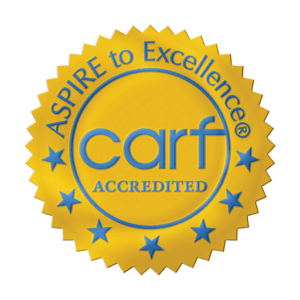If you have ever been in treatment, you have probably heard the term “craving” before. It’s often said that we have a three-part disorder – mental obsession, spiritual malady, and the phenomenon of craving. The phenomenon of craving is the main distinction between those of us who have a substance use disorder (SUD) and those who do not. Only a person with a SUD will experience this craving.
Defining the Phenomenon of Craving
A physical allergy is described as the reaction our physical bodies have to substances. This allergy produces indescribable symptoms and is very similar to any other allergy one may have. For example, if you are allergic to peanuts, you may experience red welts on your skin, difficulty breathing, or tightness in your chest.
When people with SUDs put substances into our bodies, we experience an overwhelming compulsion to keep using or drinking those substances. If we do stop, most of the time it’s only because we were stopped by someone else – but it doesn’t last for long. We pick up exactly where we left off and ultimately find that we can’t control the amount or frequency of our use.
All we want is to be relieved of this craving, but we don’t know how to get there. In recovery, we have to fully concede that once we have passed the “invisible line,” there’s no going back. We can’t go back to moderate substance use – we must abstain from it entirely.
There’s a common language among those of us with SUDs. We believe that our loved ones simply can’t understand because they don’t suffer from the same condition. The best thing our families can do is to introduce us to someone who has gone through the same experience, fought the same cravings, and made it through to the other side.
Cravings vs. Mental Obsession
Once we start the recovery process, we may think that after a week of being completely clean and sober, we are experiencing cravings for drugs or alcohol again. This is a mistake most of us make. But the physical allergy can only ignite when we are actively using – it requires actual action.
What we are experiencing is mental obsession, which is what happens after the craving occurs. It’s the daily racing thoughts of when you’re going to get your next fix or how much you wish you had your substance of choice right now. Calling it a craving can trick our minds into thinking we’re doomed to fail again.
When we call it a mental obsession, we can see it more easily for what it really is – and realize that it will pass soon enough. The physical allergy we feel will never go away, no matter how long we abstain from drugs or alcohol. If we decide to use again after months or even years, we’ll be right back where we left off. The mental obsession is what we can fight in recovery.
Seek Help
Once you have been physically separated from drugs or alcohol, then true recovery can begin. If you’re ready to seek help, speak with a professional from Alta Loma today.
Our residents can relax in the confidence that every aspect contributing to their mental health and sobriety will be answered throughout their stay, making their time at Alta Loma truly productive and uplifting. Call us today at (866) 457-3843.






